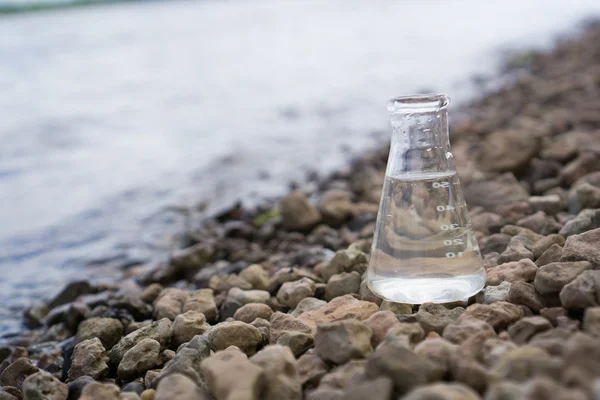Biomimetic Water Purification

Introduction
Water purification is essential for maintaining clean and safe drinking water. With the increasing levels of pollution and contaminants in our water sources, there is a growing need for innovative and sustainable purification methods. One such method that is gaining momentum is biomimetic water purification.
Biomimicry is the practice of mimicking natural processes and structures to solve human challenges. In the case of water purification, biomimicry involves designing systems that replicate the natural purification processes that occur in ecosystems. By learning from nature and applying these principles to water purification, researchers and engineers are able to develop more efficient and sustainable solutions.
This article will explore the concept of biomimetic water purification, its advantages over traditional methods, and some of the innovative technologies that are being developed in this field.
The Need for Sustainable Water Purification
Access to clean and safe drinking water is a basic human right, yet millions of people around the world still lack access to clean water. According to the World Health Organization, 2.2 billion people worldwide do not have access to safely managed drinking water services. Contaminated water can lead to a range of health problems, including diarrhea, cholera, and typhoid, and is a major cause of disease and death in developing countries.
Traditional water purification methods, such as chlorination and filtration, have been effective in treating contaminated water. However, these methods often rely on the use of chemicals or energy-intensive processes, which can have negative impacts on the environment and human health. For example, chlorination can produce harmful disinfection byproducts, while filtration systems require large amounts of energy to operate.
In contrast, biomimetic water purification offers a more sustainable and environmentally friendly approach to water treatment. By taking cues from nature, researchers are able to design systems that are more efficient, cost-effective, and eco-friendly.
Biomimetic Water Purification: Principles and Advantages
Biomimetic water purification draws inspiration from natural purification processes that occur in ecosystems. For example, wetlands are known for their ability to naturally filter and purify water. As water flows through a wetland, plants and microorganisms help to remove pollutants and contaminants, resulting in cleaner water.
One of the key principles of biomimetic water purification is to mimic the structure and function of natural systems. By replicating the characteristics of natural ecosystems, such as the interconnectedness of plants, animals, and microorganisms, researchers are able to create water purification systems that are more effective and sustainable.
There are several advantages to using biomimetic water purification techniques:
1. Sustainability: Biomimetic systems are designed to be more sustainable and environmentally friendly than traditional purification methods. By using natural processes and materials, these systems minimize the use of harmful chemicals and reduce energy consumption.
2. Cost-effectiveness: Biomimetic water purification systems can be more cost-effective than traditional methods in the long run. While the initial investment may be higher, the lower operating costs and maintenance requirements make these systems a more economical choice over time.
3. Efficiency: By replicating natural purification processes, biomimetic systems are able to achieve higher levels of water purity with less energy and resources. These systems are also able to remove a wider range of contaminants, including heavy metals, pesticides, and pharmaceuticals.
4. Resilience: Biomimetic systems are often more resilient to changes in the environment, such as fluctuations in temperature and pH levels. This makes them more effective in treating water from varying sources and under different conditions.
Innovative Biomimetic Water Purification Technologies
There are several Innovative Biomimetic Water Purification Technologies that are currently being developed and tested:
1. Biofiltration Systems: Biofiltration systems use natural processes, such as plant roots and microorganisms, to remove contaminants from water. These systems can be used to treat both surface water and wastewater, and are effective in removing pollutants such as nitrogen, phosphorus, and heavy metals.
2. Membrane Technologies: Membrane technologies, such as reverse osmosis and nanofiltration, are inspired by the filtering abilities of biological membranes in living organisms. These systems are able to remove particles and contaminants from water at the molecular level, resulting in highly purified water.
3. Aquaporin-Based Systems: Aquaporins are proteins found in cell membranes that are responsible for regulating the flow of water across the membrane. Researchers are developing biomimetic membranes that mimic the structure and function of aquaporins, allowing for more efficient water filtration and purification.
4. Shark Skin-Inspired Materials: The skin of sharks contains tiny scales called dermal denticles, which help reduce drag and prevent biofouling. Researchers are using shark skin as inspiration to develop materials that can be used in water purification systems to improve efficiency and reduce fouling.
5. Plant-Based Filtration: Plants have long been used for phytoremediation, a process that uses plants to remove pollutants from soil and water. Researchers are exploring how plant-based filtration systems can be used to purify water in a sustainable and natural way.
Future Directions
Biomimetic water purification holds great promise for addressing the global challenge of providing clean and safe drinking water to all. By drawing inspiration from nature and applying these principles to water treatment, researchers are able to develop innovative and sustainable solutions that are more efficient, cost-effective, and environmentally friendly.
However, there is still much work to be done in this field. Researchers continue to explore new biomimetic technologies and improve existing systems to achieve higher levels of water purity and efficiency. Collaboration between scientists, engineers, and policymakers will be key to advancing the development and implementation of biomimetic water purification technologies on a larger scale.
In conclusion, biomimetic water purification offers a novel approach to addressing the growing need for clean water around the world. By taking cues from nature and replicating natural processes, researchers are able to design systems that are more sustainable, cost-effective, and efficient. With continued innovation and investment in this field, biomimetic water purification has the potential to revolutionize the way we treat and purify water in the future.
